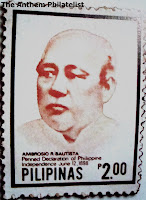The National Anthem of Libya

When Libya became independent in December 1951, it was a kingdom until the overthrow of the monarchy by Moammar Qadaffi in 1969. During the time of the monarchy, the anthem "Libya, Libya, Libya" was used. The composer of the music, Mohamad Abdel Wahab , also wrote the music for the anthems of Tunisia and the United Arab Emirates. The words were written by Al Baschir Al Arebi . In 1969, a new anthem "Allahu Akbar" (God is Greatest) was adopted. It is not only the title of the anthem of this Islamic north African state, but also the Muslim call to prayer. Originally, the text and the melody were written by Mahmoud El-Sherif as a battle song of the Egyptian Army during the Suez War in 1956. When Muammar Qadafi transformed Libya into a republic in 1969, he adopted this Egyptian marching song composed by Abdalla Shams El-Din as the Libyan national anthem, as part of his ultimate goal of unity of all Arab nations. When Qadafi broke off the relations with Egypt after...










